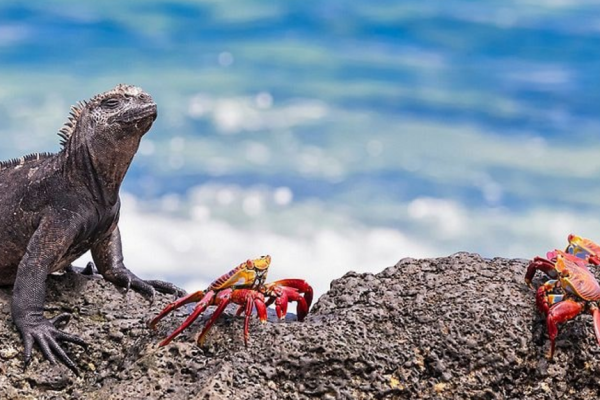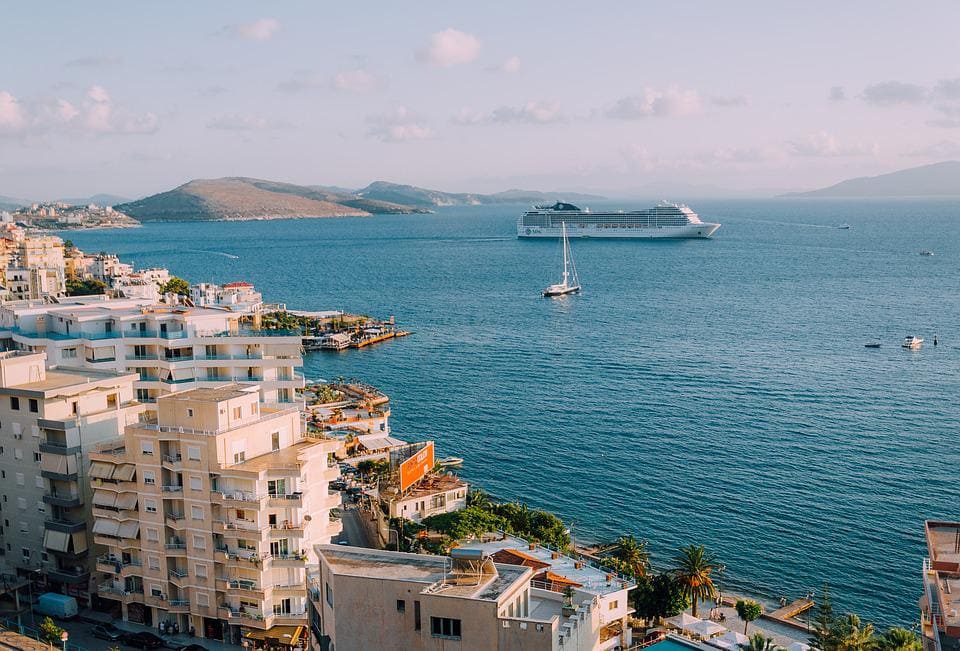Off the coast of Ecuador, there is a hole in the Earth’s crust deep beneath the Pacific Ocean. Lava seeps through as continents move and drift, this hot spot acts like a conveyer belt in the manufacture of an island chain. These are the Galapagos Islands. This craggy archipelago is home to a diverse array of species found nowhere else on Earth.
The abundance of unique wildlife and the dramatic adaptations it has made to survive, make Galapagos the perfect destination for researchers and tourists alike. What type of natural wonders were beheld, that inspired Darwin’s, On the Origins of Species? We have put together just a few of the curious evolutionary dramas you may witness:
Blue-Footed Booby
The blue-footed booby is a black and white bird with bright blue feet. They received their name for their comical appearance. During the mating season, male blue-footed boobies will try to impress their mate by kicking their big, blue feet as high as they can. The higher they kick the more likely they will be selected as a suitable mate. This particular ritual charms the heart of almost every explorer who witnesses it. There are three varieties of Boobies on the Islands, and not all of their evolutionary relatives are so light-hearted, as you will read later.
The Waved Albatross
Perhaps the most romantic bird you may encounter on your visit is the waved albatross. This large grey and white seabird will choose its mate for life. The courtship between the breeding pair takes place in the Galapagos Islands. The mating ritual takes place from March to January. The male will spread its wings wide, then perform a series of bows, followed by throwing its head back. If all goes well, the female will join in, and the two will tap their beaks together.
Once this courtship is complete, the two will raise a hatchling. Once the hatchling has fledged it will leave the nest. The parents will leave the islands separately, only to see each other again when they return for their annual tryst in the Galapagos Islands.
Nazca Booby
As any biologist will tell you, not all evolutionary adaptations are charming. One of the more brutal adaptations developed to survive in the harsh environment where competition for resources is on display during the hatching process of the Nazca Booby.
One of three species on the islands, the Nazca Booby or Masked Booby, hides something far more sinister than its red and blue-footed cousins. The Nazca Booby is the largest of the three species. Every year the mother will lay two eggs. Always two. She will incubate both until they hatch. At birth, the mother will only raise one. The first thing Nazca Booby chicks do on this planet is fight for their lives. The dominant hatchling will be raised by the mother, leaving the other to the cruel laws of nature. Sometimes evolution isn’t for the faint-hearted.
Galapagos Tortoise
The Giant Galapagos Tortoise is a crowd pleaser. This magnificent creature can live over a hundred years and adults can weigh over 500 lbs. Every year the adult Males will spend the dry season in the highlands on the Island of Santa Cruz. As the seasons change, these giants will slowly migrate to the lowlands. Why? Because that’s where the ladies are. Mating will take place during the rainy season. The females of the species remain in the lowlands with the immature males year-round. The giant males will then begin the slow march back to the highlands. Scientists are still researching this partial migration pattern.
Galapagos Iguanas
The Galapagos Islands are young Islands by comparison due to the nature of their formation over a hot spot. A byproduct of this is that most of the observable land animals originally arrived on the islands as castaways in storms or stowaways on ships. One of these survivors is the Galapagos Iguana.
Galapagos Islands are home to the only species of iguana that feeds underwater. Iguanas have no glands to process the salt from the water where they feed. With no way to remove salt from their body, the iguana would surely perish. However, as you can see clinging to the jagged volcanic rocks, these iguanas are thriving. Just how can it be that these iguanas have managed to survive? They have developed a unique evolutionary quirk over the generations. To remove the salt water, iguanas will blast streams of water from their noses! Small geysers of salinated water shoot as far as 3 feet in the air as they purge before their next meal.
The bizarre adaptations, unique characteristics, extreme isolation, harsh environment, and biological drama of the islands make the Galapagos an evolutionary petri dish. These wonderful and sometimes tragic adaptations are just a few of the seasonal dramas you will behold on your visit. It is important to time your visit to the seasons to ensure you are there. Nothing helps more than the advice of seasoned expedition cruise experts. Take full advantage of an experienced Travel Advisor when planning your visit to these mysterious islands.



